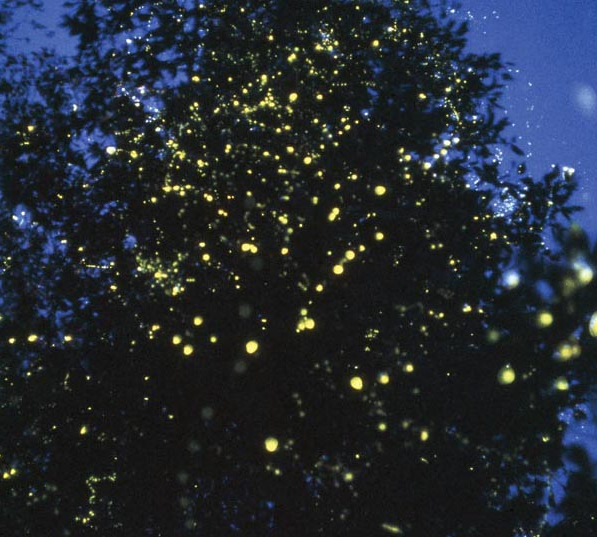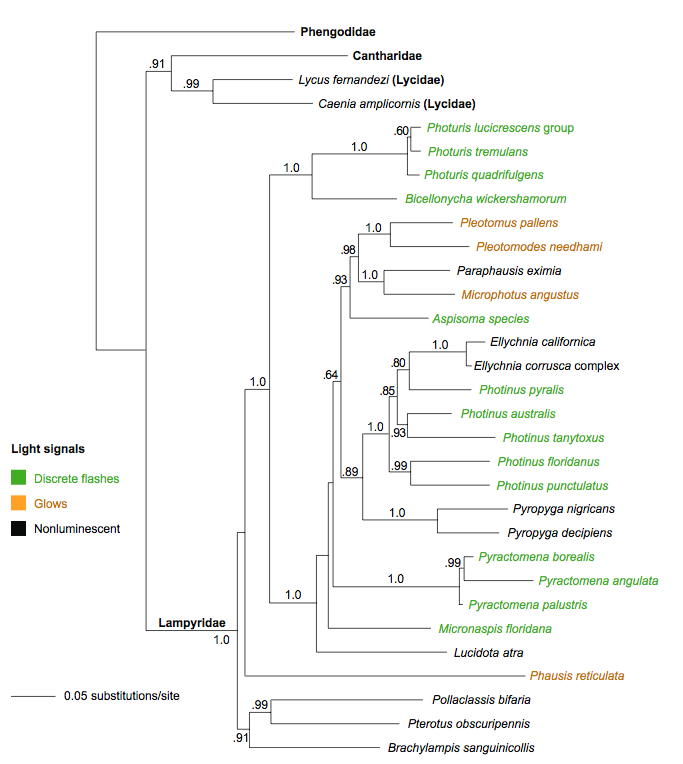
Synchronous Flashing in Southeast Asian Fireflies
Biology 342 Fall 08 - Matt Hagen and Laurel Oldach
Phylogeny
Of Firefly Flashing
Bioluminescence in firefly ancestors was a larval signal meant to warn predators of their toxicity. Therefore, the use of flashes in adult courtship is an exapatation, or re-purporsing of a preexisting signal. (Lewis, Cratsley).. This new adaptation branching happened at least four times in firefly ancestors (See the figure below, a phylogenetic tree constructed by Lewis and Cratsley) resulting in different flash colors and patterns for different firefly species today.
Of synchronous rhythmic flashing
Synchronous rhythmic flashing has been observed in Asian fireflies. It was long believed that they were "unique in the animal kingdom" for this concerted action (Buck and Buck, 1966). However, parallels have appeared as scientists investigate the mechanisms underlying synchrony. Short-term flash synchrony has been observed in the North and South American firefly genuses Photuris and Photinus, with "wave and intermittent synchrony among flying males" (Lewis and Cratsley), although such rhythmic flashing doesn't last as long as that found in firefly trees, and ends when the groups of males disperse.
Beyond the firefly, synchrony has been observed in many other insects, particularly in sound communication and is driven by neural oscillators going into phase with one another (Greenfield 1994) (also see Synchrony)

Image taken from Lewis & Cratsley 2008